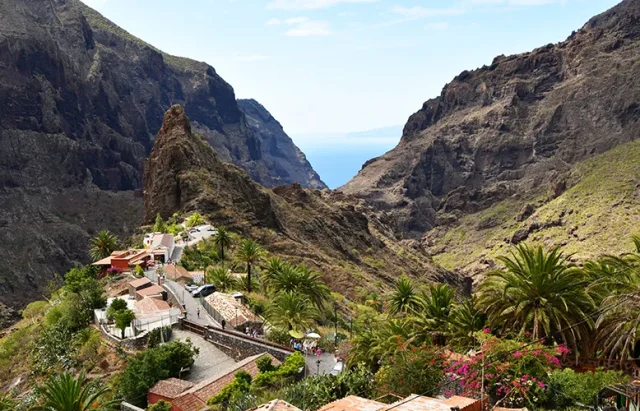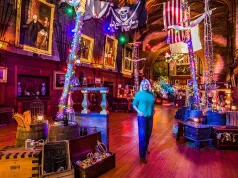
You know that feeling when you arrive somewhere new and immediately sense there’s a whole other world beyond what the guidebooks show you? That’s exactly what happened to me on my first proper visit to Tenerife.
Sure, I’d been before, done the usual tourist trail, ticked off the obvious spots. But it wasn’t until I started chatting with Maria, who runs a tiny café in La Orotava, that I realised I’d barely scratched the surface.
“Tourists always rush to the same three places,” she said, shaking her head whilst pouring the most incredible cortado I’ve ever tasted. “They miss the real Tenerife completely.”
She was absolutely right. And after spending the better part of two years exploring this island properly, I’ve discovered there’s so much more to Tenerife than the glossy brochures suggest. Let me share what I’ve learned, the stuff that’ll make your trip genuinely special.
Why Most People Get Tenerife Wrong
Here’s the thing about Tenerife: it’s not just one destination. It’s like several different islands rolled into one, each with its own personality, climate, and culture. Most visitors stick to the southern resorts or make a quick dash up Mount Teide, then wonder why everyone raves about this place. Before I learned this myself, I spent ages trawling through generic travel sites until I discovered the Tenerife Forum ; it’s where locals and long-term residents share the real insider knowledge you won’t find anywhere else.
The real magic happens when you venture beyond the obvious. When you discover that the north feels like a completely different country from the south. When you realise that some of the best food isn’t in fancy restaurants but in tiny family-run guachinches tucked away in villages you can’t even pronounce.
I remember my first time trying to explain Tenerife to friends back home. “It’s got everything,” I kept saying, probably sounding a bit mad. But it genuinely does; volcanic landscapes that look like Mars, lush forests that feel like fairy tales, beaches with sand so black it’s almost purple, and others with sand so golden it glows.
The North vs South Divide (And Why It Matters)
This might be the most important thing to understand about Tenerife. The island has two completely different personalities, and choosing where to base yourself will shape your entire experience.
The South: Sun, Sand, and Serious Relaxation
The south is what most people picture when they think of Tenerife. It’s reliably sunny, properly hot, and home to those famous golden beaches like Playa de las Américas and Los Cristianos. The infrastructure here is brilliant, everything’s designed for tourists, which means excellent hotels, restaurants that cater to every taste, and activities galore.
But here’s what the brochures don’t mention: it can feel a bit artificial. Not in a bad way, necessarily, but you’re definitely in tourist-land. If you want guaranteed sunshine and don’t mind that slightly resort-y atmosphere, the south is perfect.
The North: Where Real Tenerife Lives
The north is where things get interesting. It’s greener, cooler, and infinitely more authentic. Puerto de la Cruz has this wonderful faded elegance, think grand old hotels and botanical gardens that have been there for centuries. La Laguna, the former capital, is a UNESCO World Heritage site with cobbled streets and colonial architecture that’ll make you forget you’re on a holiday island.
The weather up north can be unpredictable. One minute you’re in brilliant sunshine, the next you’re caught in a proper downpour. But that’s part of its charm. The locals have a saying: “En el norte, cuatro estaciones en un día” – four seasons in one day. I always check the Tenerife News before heading north, they’ve got the most accurate local weather updates and often mention seasonal events happening around the island. Pack layers, and embrace the adventure.
Hidden Gems That’ll Make Your Trip
Masca Village: Worth the Hype (If You Do It Right)
Everyone’s heard of Masca by now, that impossibly picturesque village perched on a cliff edge. Yes, it’s touristy, but there’s a reason for that. It’s genuinely spectacular.
The trick is timing. Arrive early (I mean properly early, like 8am) or late in the afternoon. The coach tours descend between 10am and 3pm, turning this peaceful hamlet into something resembling a theme park. Outside those hours? Pure magic.
Pro tip: Don’t just take photos and leave. Have a coffee at one of the tiny cafés and chat with the locals. They’ve got stories that’ll give you goosebumps.
Anaga Rural Park: Tenerife’s Best-Kept Secret
If Masca is Tenerife’s poster child, Anaga is its soul. This ancient mountain range in the northeast feels like stepping back in time. The laurel forests here are remnants of what covered much of Europe millions of years ago.
The hiking here is phenomenal, but it’s not just about the exercise. There are villages in Anaga where time seems to have stopped. Taganana, for instance, is this tiny coastal settlement where the locals still live much as their grandparents did. The drive there alone, winding through misty forests with glimpses of the ocean far below, is worth the trip.
Garachico: The Town That Refused to Give Up
This might be my favourite place on the entire island. Garachico was once Tenerife’s most important port until Mount Teide decided to redecorate in 1706, covering the harbour in lava. Instead of giving up, the townspeople rebuilt around the volcanic rock, creating these incredible natural swimming pools.
Today, it’s this perfectly preserved colonial town with barely any tourists. The natural pools (called El Caletón) are free to use and absolutely magical for swimming. There’s something deeply satisfying about floating in warm Atlantic water surrounded by volcanic rock, knowing you’re experiencing something genuinely special.
Food: Beyond the Tourist Traps
Let me be blunt: if you’re eating in restaurants with menus in four languages and pictures of the food, you’re doing it wrong. The best meals I’ve had in Tenerife have been in places that look like someone’s front room.
Guachinches: Where Magic Happens
Guachinches are traditional family-run eateries, usually in people’s homes or garages. They serve simple, local food at prices that’ll make you double-check the bill. We’re talking proper Canarian potatoes with mojo sauce, fresh fish caught that morning, and wine made by the owner’s cousin.
Finding them requires a bit of detective work, they’re not on TripAdvisor. Ask locals, look for handwritten signs, or follow your nose. The best ones are often in tiny villages you’d never think to visit otherwise.
Markets: Where Locals Actually Shop
Skip the tourist markets and head to the local ones. Mercado de Nuestra Señora de África in Santa Cruz is brilliant, proper fruit and veg, local cheeses, and the kind of atmosphere that makes you want to cook.
The Saturday market in Tacoronte is smaller but special. It’s where I discovered the best tomatoes of my life (seriously, Canarian tomatoes are in a league of their own) and learned to make proper mojo sauce from a grandmother who insisted on teaching me despite our language barrier.
Getting Around: What Actually Works
Renting a car is almost essential if you want to see the real Tenerife. The bus system (called guaguas locally) is decent for getting between major towns, but hopeless for reaching the hidden gems.
That said, driving here takes some getting used to. The roads are narrow, winding, and occasionally terrifying. The route to Masca, for instance, is not for the faint-hearted. But the freedom it gives you is worth every white-knuckle moment.
If you’re not comfortable driving, consider hiring a local guide for a day. It costs more than doing it yourself, but you’ll learn things no guidebook could teach you.
When to Visit (And When Not To)
The conventional wisdom says Tenerife is a year-round destination, and technically that’s true. But sometimes are definitely better than others.
Best times: October to December and February to April. The weather’s lovely, prices are reasonable, and you won’t be fighting crowds for every photo opportunity.
Avoid if possible: July and August (too hot and crowded), and the week between Christmas and New Year (expensive and manic).
Shoulder seasons: May and September can be brilliant if you don’t mind the occasional shower.
Frequently Asked Questions
Is Tenerife just for package holidays and pensioners?
Absolutely not. Yes, it attracts that crowd, but there’s so much more. I’ve met backpackers, digital nomads, adventure seekers, and culture vultures who’ve all fallen in love with different aspects of the island.
Do I need to speak Spanish?
It helps, but you can get by with English in tourist areas. Learning a few basic phrases will open doors, though. Locals appreciate the effort, and you’ll have much richer experiences.
Is it expensive?
It can be, especially in the southern resorts. But eat where locals eat, stay in local accommodation, and shop in proper markets, and it’s very reasonable. A meal in a guachinche might cost €10 for two people.
What about the weather in winter?
It’s mild and pleasant, though the north can be cloudy and wet. Pack layers and waterproofs. The south stays sunny most of the time.
Is it safe?
Very. Tenerife has low crime rates, and locals are generally helpful and friendly. Use common sense, as you would anywhere, but don’t worry about safety.
The Real Tenerife Awaits
Here’s what I wish someone had told me before my first proper visit to Tenerife: forget everything you think you know about this place. Yes, it’s got great beaches and reliable sunshine. But it’s also got ancient forests, volcanic landscapes that’ll take your breath away, and some of the warmest, most welcoming people you’ll ever meet.
The island rewards curiosity. Take that unmarked road. Try that tiny restaurant with no English menu. Chat with the old man feeding pigeons in the square. These moments, not the ones from the tourist brochures, are what you’ll remember years later.
Tenerife isn’t trying to be anything other than itself. In a world of manufactured experiences and Instagram-perfect destinations, there’s something deeply refreshing about a place that’s just genuinely, authentically brilliant. You just need to know where to look.





